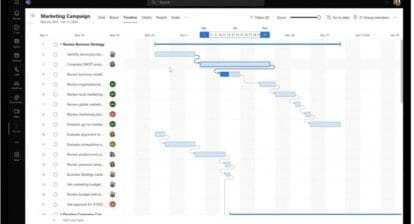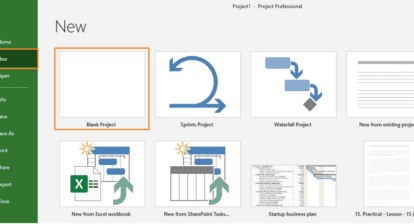
In one of the first projects I worked on in the healthcare industry, our project manager (PM), Steve, was brilliant. An outside-the-box thinker, Steve always had creative strategies and solutions for most challenges the project faced. While everyone agreed that Steve had unique and valuable perspectives, there was little doubt that his communication with his team members left much to be desired. Staff turnover was high, and miscommunication errors were abundant; team members were often left guessing their roles and what was coming down the pipeline. Many complained about the need for more precise communication. Initially slated to take two years to complete, the project took five. It wasn’t until Steve was replaced with another project manager that things started working more smoothly. The new PM made team communication her priority from day one. As a result, team morale soared, and the project thrived.
My story is not unique. Statistics show that good communication can improve a team’s productivity by up to 25%, and over 80% of Americans believe communication is essential for developing trust with employers. Poor communication, on the other hand, is responsible for nearly 30% of project failures.
Chances are, you have worked with someone like Steve. Or maybe you worry your communication style is more like Steve’s than you’d like it to be. Communication makes individuals on a project feel like a team, whether you share the same office space or have team members working from multiple countries worldwide. Read on for 10 practical tips for improving team communication as a project manager.
10 Practical Tips for Improving Team Communication
1. Develop a Communications Strategy
Taking the time to develop a communication strategy is an excellent way to ensure that everyone is on the same page and that all project information is shared promptly and effectively.
Your project’s communication strategy should outline how the information will be shared among team members, stakeholders, and project sponsors and establishes a framework for effective communication. It should also outline how feedback and concerns will be addressed and how communication will be documented and shared. By developing a clear and comprehensive communication strategy, you can minimize confusion, ensure everyone can access the information they need, and foster a collaborative and open environment.
2. Establish Clear Roles and Responsibilities
Establishing clear roles and responsibilities can help clarify who is doing what and ensure everyone knows what they’re responsible for. An organizational chart that outlines the roles and responsibilities of each team member is a great way to start. Share the chart with your team and confirm that everyone understands what their role is and what tasks they are responsible for. Communicate changes or updates to the chart promptly — your team members are busy, so don’t count on them consistently referring to the chart to see who is doing what. Instead, send an email as a heads-up about the changes made.
3. Use Multiple Channels
Workplace communication happens in several ways — face-to-face, instant messages, email, memos, telephone and video calls, and work management platforms. To ensure your message reaches the right team members at the right time, consider which tool is most appropriate for your communication. Choose the communication modality that makes the most sense for what you’re trying to communicate. If you have the bandwidth, it may help to establish communication protocols. For example:
- Phone calls for urgent questions and emergencies
- Video teleconferences or face-to-face weekly team meetings
- Microsoft Chat for team communication, data sharing, issue tracking, etc.
- Emails for important project status updates
When you’re working with a team, each team member will have certain communication methods they prefer over others. For example, some team members prefer emails over phone calls, while others prefer face-to-face interaction over instant messages. While you won’t always be able to accommodate everyone’s preferences, using a mix of communication methods is the best way to ensure you reach your team members when needed and in a way that works for everyone.
4. Prioritize Mutual Communication
In the working world, communication often happens from the top down, meaning management relays information to their project team with little to no input from team members. But good, meaningful communication is a two-way street. As a project manager, actively listening to your team members is essential. Create an environment where team members feel comfortable expressing their thoughts and ideas. Ask open-ended questions in team meetings and 1:1 meetings, and be willing to listen to your team members’ insights and feedback, even if it’s critical. Respond to any concerns or questions promptly and take action when necessary.
By implementing a bottom-up communication style, you’re promoting transparency and giving your team members who are not in leadership roles the opportunity to contribute their ideas, insights, and opinions and openly discuss them. Not only does this promote healthy communication, but it also gives your project team members a chance to bring challenges to your attention that you would otherwise not be aware of so you can address them quickly.

5. Make Time for Team Building
Getting to know your team members and allowing them to connect is essential to fostering open communication. There are many team-building exercises to choose from, and the way you go about it will depend on several factors (e.g., remote team vs. in-office). These activities can be as simple as starting each team meeting with some icebreaker questions, adding a few board games to the break room, or hosting a monthly pizza party for lunch. When your staff feel like they know each other (and you) beyond their day-to-day job tasks, there’s more room for a positive team culture that fosters open communication and encourages team members to work together more effectively.
6. Encourage Feedback
You may not get feedback without openly encouraging or asking for it. You can ask for feedback on your communication style, which can give you a better understanding of how to improve and find ways to develop clear communication strategies that work effectively for your team. If you’re not looking for personal feedback, emphasize that you encourage feedback on the project. At each team meeting, invite feedback after everyone has shared their progress updates and challenges.
Team members may want to refrain from speaking up in group meetings, and others may have feedback that is difficult to share publicly. Consider creating an anonymous feedback channel that allows people to share their thoughts safely. Once you receive feedback, act on it and address any raised concerns. When team members feel comfortable giving input and feel heard, they’re more likely to speak up when issues arrive.
7. Set The Tone
As a project manager, how you collaborate and communicate will undoubtedly affect your whole team (and the project itself). Your team will follow suit when you set the standard for clear, direct, open communication in the workplace. Make it a point to check every few months to ask how everyone feels about communication. Are there communication methods that folks would like to change? You may be tempted to “set it and forget it” when it comes to your communications strategies, but it’s better to think of work communication as ever-evolving and be willing to make changes as needed.
8. Have an Open Door Policy
An open-door policy is an effective way to improve project communication. You foster open and honest communication by encouraging team members to approach you with their concerns, ideas, and questions. It’s also an opportunity to provide support, feedback, and guidance. By actively listening to your team members, you can gain valuable insight into potential issues and make adjustments to help the project stay on track rather than waiting for the next team meeting to hear about it. By letting your team members know you have an open-door policy, you create a welcoming environment where your team members feel appreciated and heard.
9. Ensure Documentation is Accessible
Keeping your project status updated and accessible is as important as other communication methods. Prioritize making project plans, timelines, milestones, and deliverables easily accessible and updated. When team members have access to this information, they can better understand their role in the project and how their work fits into the larger Project Goals. This can help improve communication and collaboration by ensuring everyone is working towards the same objectives and has access to the information they need to do their job effectively.
Use online tools and platforms to store and share documents with team members, such as MS Project, cloud-based storage, and collaborative workspaces. At the onset of your project, establish guidelines for storing, sharing, and updating documents to ensure that everyone uses the same system and that the information is up-to-date.
10. Celebrate Successes
Celebrating big and small successes is an excellent way to build team morale and encourage continued success. Celebrate achievements and milestones with your team in ways that recognize individual and group contributions, and show appreciation for hard work and dedication. Not only does this foster a positive team culture, but it helps your team members feel appreciated, reinforces your commitment to the project, and shows appreciation for their contributions.

Conclusion
For many of us, good communication can take work, especially when we’re bogged down in the day-to-day workings of the project. It takes practice and experience, but by implementing these tips, you can help ensure everyone on your project team is working towards the same goals, feels confident to share their insights and challenges, and stays aware of the changes that arise along the life of your project. Have project communication tips? We’d love to hear what your strategies are in the comments!
Related Articles
Project Initiation: How to Start Your Project on the Right Foot







